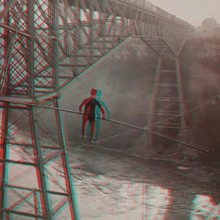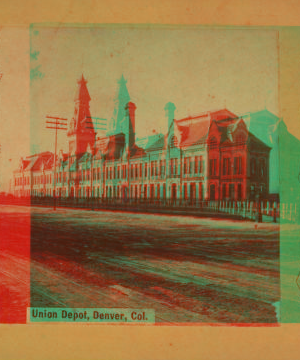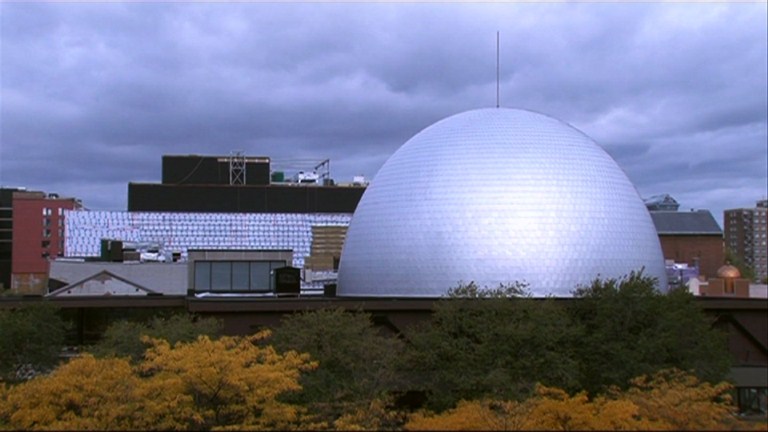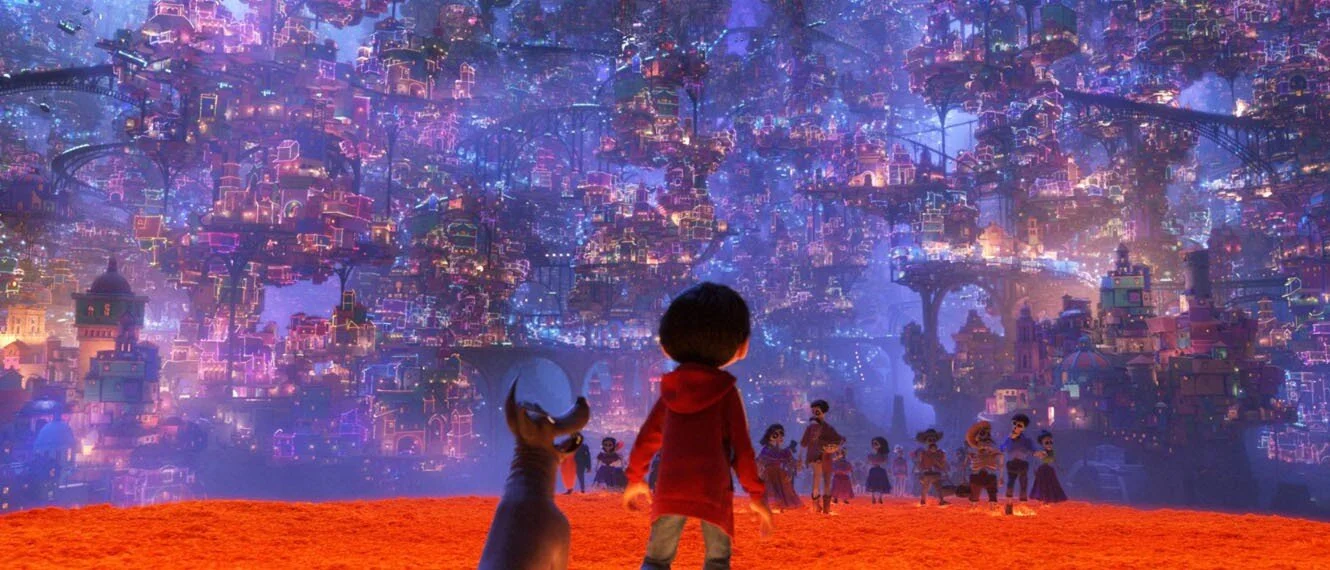Pixar revolutionized the animation industry through innovative technology and incredible storytelling. It was responsible for core developments in computer graphics history, blending technology and arts to make many of their films possible, leading to its massive success. 3D computer modeling technology has not only allowed for more efficient and faster animating, but it has opened the door for more people who are interested in joining the industry. It now easier than ever to download these softwares and begin learning how to animate. For artists in industry, there is not longer a limitation in the art that is waiting to be created – their visions can become a reality with the continual development of advanced animation technology.
A Digital Future for Cultural Heritage
Digital technology is becoming a standard tool for the collection, preservation, and dissemination efforts of arts and cultural heritage worldwide. From 3D configuration of ancient artifacts to applying artificial intelligence to shed new light on how we perceive the lineage of humanities, cultural heritage is headed toward a digital future. This article will examine the ways in which digitization and artificial intelligence – two of the most widely used or relevant forms of technology in cultural heritage – are applied through global cases of innovative initiatives happening in the field in recent years.
News Roundup: New Possibilities In 3D
AMT-Lab contributors are always looking at all sorts of new technologies in the world of 3D. With the increasing popularity of technologies such as 3D printing, the possibilities continue to emerge. These new technologies and their uses in the art world keep us interested in how the intersection of art and technology impact our world.
Welcome to the World of Old School 3D Photography
Over a hundred years before 3D technology invaded movie theaters and living rooms, another form of 3D image technology was incredibly popular around the globe. The images were called stereographs, and the technology was quite simple: two pictures of the same image, shot from slightly different angles, were viewed through a narrow device that only let you see one image with each eye, giving the appearance of a 3D image (remember playing with a ViewMaster as a kid? The technology is quite similar).
Now, thanks to the work of the New York Public Library, you can view over 40,000 stereographs, most of them over a century old, and create your own animated GIF that offers the illusion of a 3D image. In addition, you can also create modern 3D photos of the same images, viewable through those hokey blue-red 3D glasses. The best part? Sharing your creations with your fellow arts lovers!
technology was incredibly popular around the globe. The images were called stereographs, and the technology was quite simple: two pictures of the same image, shot from slightly different angles, were viewed through a narrow device that only let you see one image with each eye, giving the appearance of a 3D image (remember playing with a ViewMaster as a kid? The technology is quite similar).
Now, thanks to the work of the New York Public Library, you can view over 40,000 stereographs, most of them over a century old, and create your own animated GIF that offers the illusion of a 3D image. In addition, you can also create modern 3D photos of the same images, viewable through those hokey blue-red 3D glasses. The best part? Sharing your creations with your fellow arts lovers!
As reported by the New York Times last week, the NYPL Lab’s site, called the Stereogranimator, is simple to use. To create an animated GIF, first, you select a pair of similar looking pictures from a collection of over 40,000 images, some of which date back to the nineteenth century. Second, you choose your focal point within the image and the speed of the animation. Finally, you can share the animated GIF on social media sites or embed in your blog. You can see my custom image below!
 GIF made with the NYPL Labs Stereogranimator
GIF made with the NYPL Labs Stereogranimator
The process for the 3D anaglyph image is similar. After choosing a pair of images, you choose your focal point within the image and hit the create button. You can see my 3D image below, which can be aided just in case you have those old-school blue-red 3D glasses!
 ANAGLYPH made with the NYPL Labs Stereogranimator
ANAGLYPH made with the NYPL Labs Stereogranimator
As I scrolled through the photographs, it surprised me how many images were taken back then that look so similar. As artist Joshua Heineman, the brains behind the operation, describes on the NYPL Lab site, this was intentional: looking at both pictures, the viewer could be provided with a sense of depth that simply was not possible by looking at one image. With so many of these image pairs being captured, the public would use the stereograph, the ultimate entertainment device of the late 19th century, to see a very early form of 3D technology for themselves. Like video games or movie theaters today, the technology was a hugely popular for several decades.
The New York Public Library’s site is another example of an encouraging trend: more libraries opening up their vast collections to an online audience for free. While some library systems have been hesitant to open up too much of their catalog to online audiences, the NYPL has been a leader in embracing the online community: in addition to their stereograph project, the library also has a project titled “What’s on the Menu?,” where people can help the library transcribe historical restaurant menus to add to its data of food prices and trends.
Even better? Improving the experience through technology, in this case with animated and 3D images. While the technology is far from groundbreaking for today’s audience, it does offer a unique historical look back at a technology that was so popular a century and a half ago.
We here at Tech in the Arts have written before about all the cool things happening today with 3D technology, and none of them have to do with the latest films hitting the movie theater. Through collaboration, open source technology and access to historical materials, the New York Public Library and others are embracing a new movement towards more social interaction between institutions and their patrons, a movement we strongly embrace and encourage.
Art Viewed Through the Prism of 3D Technology
 On a typical trip to the American film multiplex these days, you are instantly greeted with the latest 3D films the studios have dreamed up. A market once reserved for the likes of advanced science fiction pictures, the technology has been stretched to now include nearly every major release. Given this barrage of often mediocre films, one would be hard-pressed to not grow tired of a technology still in its relative infancy.
3D technology, however, is not just limited to feature films. In Montreal, a cinema has embraced 3D technology and is using it to provide its audiences with floor-to-ceiling views, advanced speaker systems and a 360-degree view of stunning works of art.
On a typical trip to the American film multiplex these days, you are instantly greeted with the latest 3D films the studios have dreamed up. A market once reserved for the likes of advanced science fiction pictures, the technology has been stretched to now include nearly every major release. Given this barrage of often mediocre films, one would be hard-pressed to not grow tired of a technology still in its relative infancy.
3D technology, however, is not just limited to feature films. In Montreal, a cinema has embraced 3D technology and is using it to provide its audiences with floor-to-ceiling views, advanced speaker systems and a 360-degree view of stunning works of art.
The Satosphere theatre, as reported by AFP, is housed inside a giant silver dome in the city of Montreal, and is offering its audiences a unique way to enjoy the arts. The technology behind the cinema is impressive: measuring 18 meters in diameter, the dome has eight video projectors that display images all along the walls, encircling viewers and creating a truly immersive environment. Along with the projectors, the theatre also includes over 150 speakers, creating a truly cinematic experience.
And the best part of the experience? No bulky 3D glasses are required to enjoy the show.
AFP recently offered a behind the scenes look at the theatre, which you can view here.
The first show to display the technology, “Interior” by Marie-Claude Paulin and Martin Kusch, took place last month and wowed audiences both visually and sensually. With many more performances planned in the months and years ahead, the technology affords artists a new kind of opportunity not yet seen before.
The possibilities here are endless. Imagine an art show where attendees can become part of the experience, interacting with other attendees in a virtual exhibit. Or imagine being lifted to another time period or environment, surrounded by a 360-degree image of an architectural monument, barren deserts or idyllic beaches.
In addition to the opportunities for the arts community, other fields are also taking a look at the technology and seeking ways to possibly integrate it into their industries as well. Developers, hospitals, architects and many others are imagining ways to use 360-degree views to transform the way government officials, tenants, patients and more view planned projects or improvements, offering a way for people to experience a drawing or rendering in a visually immersive way before something is built.
The researchers behind the technology have no plans to just stop at immersive and interactive art shows. One of their current projects is developing a six-lens camera that uses software to merge images together, creating a seamless way to film 360-degree films.
The people behind the theatre are calling the experience “cinema for the 21st century” and “a playground for the next century,” and I’m inclined to agree. As it relates to the arts community, I can only imagine the countless creative ways and uses for a technology such as this; if the technology becomes inexpensive enough to spread worldwide, it’s quite possible it could usher in an entirely new era of artistic expression.
So the next time you leave the movie theater, disappointed with the “3D” technology in films like “Harold and Kumar” or “Puss in Boots,” remember that there are far more innovative uses for the technology being embraced all over the world, often at a significantly higher quality, perhaps headed our way very soon.








